In the pre-dawn winter hours that shroud Big Mountain in frozen darkness, a familiar figure ascends a path hewn by a tight-knit community of skiers who share a powerful bond — they’re all touched in some way by the alchemic energy of Ben Parsons, who lived so spirited an existence that his influence continues to animate anyone who traverses his namesake skin track to the summit of his hometown hill, even now, more than two years after his tragic death.
Under the inky sky before daybreak, the skier zips through the darkness, climbing the “Benny Up” route with quick, purposeful strides. He emits a cloud of vapor and clicks a carbon pole against one of the signs bearing tribute to his late friend, and just as his cardiorespiratory system reaches its peak capacity and his lungs beg for a break, he glances down at his ski tip, the one furnished with the initials “BP,” and pushes even harder.
For locals who take advantage of Whitefish Mountain Resort’s generous “Uphill Policy,” which permits skiers to don climbing skins and ascend the mountain via the “Benny Up” route between 6 a.m. and 4 p.m., they’ve probably seen Joel Shehan’s silhouette gliding swiftly up the mountain in those early-morning hours. Or they’ve heard him schussing past them as he descends on dagger-like racing skis, his micro-lite jacket fluttering in the frigid air.
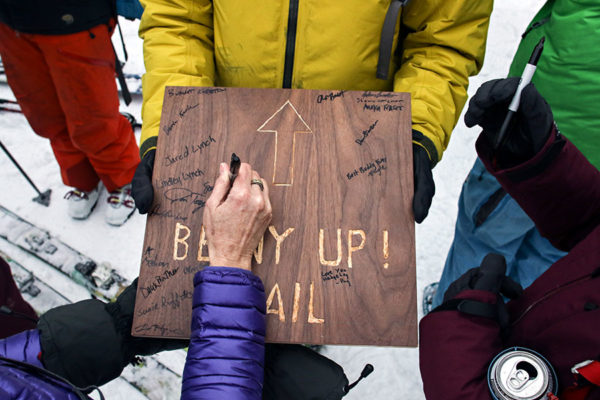
There are hoots of encouragement and boisterous cheers from members of a tight-knit ski community, which Parsons helped stitch together and in which Shehan has found solace and support, even as he props up others, radiating an energy he divined from Parsons. There’s the Wednesday night Ski Mountaineering (ski-mo) League that Parsons pioneered before his death, which draws dozens of spandex-clad competitors during the five-week series, and introduces dozens more to a sport that’s rapidly growing in popularity.
There’s post-race pizza, soul-swelling camaraderie, storytelling, and laughter.
Still, beneath the performance gear and Lycra lies a deep reservoir of grief, the result of a trauma that Shehan has been processing since Jan. 5, 2017, when he and Parsons set out to ski a familiar line on Stanton Mountain in Glacier National Park. While attempting to traverse to safety, Parsons triggered an avalanche and was killed, despite Shehan’s courageous efforts to save him.
For Shehan, 40, the devastation of losing Parsons was compounded by having lost him in the mountains, an environment that commanded a profound respect and admiration from both men, and which fostered a mutual passion for backcountry skiing and alpine adventure. His journey to recovery since then has been a brutal one, even as he displays grace in his family life — Shehan and his wife Quincy have a 7-year-old-son, Porter — and his professional life as a full-time physical therapist.
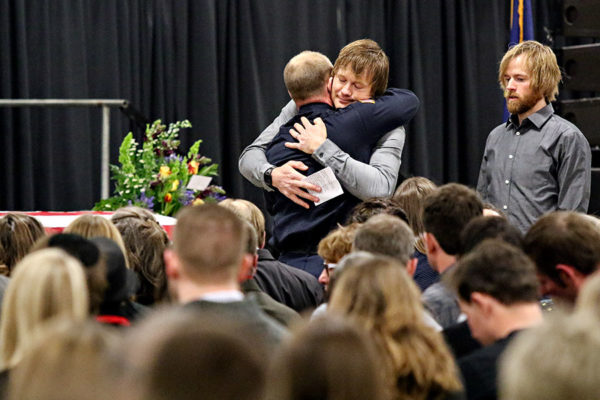
“That day, and each subsequent day, have been filled with emotions too complex to attempt to describe,” Quincy Shehan said. “Joel’s grief and trauma recovery have been seeped with intention to find a place of peace with the mountains he once trusted, but betrayed him. Literally the uphill battle of life.”
That place of peace manifested itself through ski-mo racing, a passion Shehan shared with Parsons, who encouraged him to pursue the sport more seriously and join him on the racing circuit. Following Parsons’ death, Shehan found himself clutching at a void once filled by backcountry skiing, an activity that once brought him peace but now conveys pain.
A month after Parsons died, Shehan competed in the Whitefish Whiteout, an annual ski-mountaineering race on Big Mountain that Parsons competed in and regularly won. Clad in his best friend’s skin-tight racing suit, Shehan placed fourth, narrowly missing a podium finish behind three elite skimo racers.
“After the 2017 Whiteout, wearing Ben’s race suit, I felt like I had a pretty good race. I thought, ‘Maybe I could be good at this,’” Shehan said. “I decided that maybe I should make a go at this, and jokingly said I was going to push for the 2019 Ski Mountaineering World Championship.”
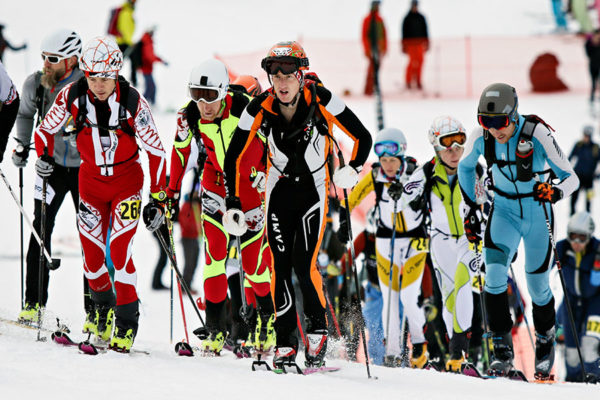
Since then, Shehan has assembled an impressive racing resume of first-place victories and podium finishes, culminating in the U.S. National Championship race at Sunlight Ski Area in Colorado on Jan. 6, 2019, nearly two years to the day after enduring the tragedy on Stanton Mountain. As a qualifying event for the World Championship, the top eight U.S. men gained entrance to the race, which will take place in Villars sur Ollon, Switzerland, between March 9 and 16.
Shehan placed ninth, just behind Missoula’s Mike Foote, a North Face-sponsored athlete and close friend to both Parsons and Shehan.
“I just missed on going to worlds, which was a pretty big disappointment,” Shehan said. “But on the other hand racing has become a positive outlet for me, and a new passion as I’m still getting my head back around the notion of backcountry skiing. And it’s a way of being with my friend and enjoying a close-ness to his legacy of racing. It’s been a positive way to channel my recovery.”
Parsons, a 1998 graduate of Flathead High School who worked as a firefighter in Whitefish, was an avid outdoorsman and standout endurance athlete who inspired anyone who witnessed his ambitious pursuits and achievements. A rare breed of athlete and well-liked by all, he earned the distinction of being one of the best mountain bike racers and ski mountaineers in the West.
Over the last decade, he was a member of the U.S. National Ski Mountaineering Team and competed in Europe against the top mountaineers in the world. He claimed numerous victories in the annual Whiteout at Whitefish Mountain Resort, where locals would regularly encounter him skinning up the mountain in the pre-dawn hours at breakneck pace.
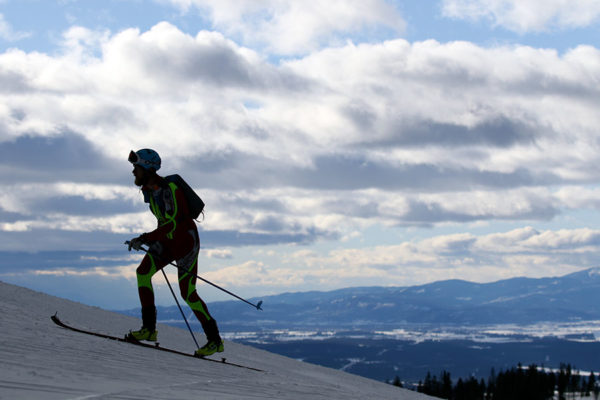
The metaphor of following in Parsons’ footsteps isn’t lost on Shehan as he adopts a similar uphill rhythm, particularly as he prepares for the race of his life — the Pierra Menta, a four-day invitation-only stage race in southern France that boasts 10,000 meters of vertical, linking grueling climbs ascending five rugged peaks. Considered the Tour de France of ski-mountaineering racing, the Pierra Menta was a highlight in Parsons’ racing career after he competed in 2010 alongside Brandon French, a Kalispell firefighter, athlete and inseparable friend to both Parsons and Shehan.
Together, Parsons and French placed 36th in a race that annually draws more than 600 of the world’s most elite ski-mo racers and thousands of spectators, with world-class mountain athletes like Kilian Jornet claiming past victories. For more than three decades, it’s been at the heart and soul of ski mountaineering as teams of two dance over the ridges and peaks of the Beaufortain massif in the French Alps.
“Making the U.S. ski-mo team would have been a huge honor and accomplishment, especially since Ben and Brandon have both competed at the world championships,” Shehan said. “But Pierra Menta is a bucket-list race, and it’s a race that Ben and Brandon did together. So to be in their company in those mountains and to follow in their footsteps is going to be awesome.”
Shehan will wear Parsons’ racing suit, which was gifted to him by Parsons’ wife, Jen Parsons, who said her husband’s competitive streak was dwarfed by the energy and enthusiasm he drew from the Flathead Valley’s community and the deep friendships he found here. Watching Shehan and his family infuse that enthusiasm as part of their journey to heal has helped Jen reconcile the tragic loss of her husband with his super-human contributions to their beloved circle of family and friends, of which racing and competition are mere byproducts.
As Shehan prepares for Pierra Menta, which he’ll compete in on March 13-16, literally following in his fallen friend’s footsteps (Parsons would have turned 39 on March 15), the real reward, and the real reason he races, is the community that has lifted him, Quincy, Jen, as well as Parsons’ family, his many friends, and his young son, Rowen.
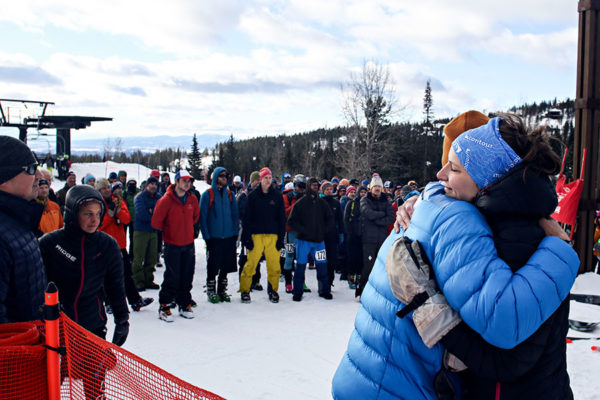
“I only recently fully realized how Joel’s journey has stitched a community together to a common cause. In the trenches of training, you rarely have time to take in the panoramic view,” Quincy said. “Over the last two months I am constantly amazed by how many people seem to be interested and share our excitement. It is humbling. It is amazing. I now am beginning to grasp that his grit to endure also encouraged many others. Really all we want to say is thank you.”
Jen Parsons is grateful she doesn’t have to carry Shehan’s memories of the events that unfolded on Stanton Mountain on Jan. 5, but she’s grateful to have access to them, and she’s grateful Shehan was there in the mountains to swaddle her dying husband in warmth and love.
And while she’ll be cheering loudly for Shehan as he chases Parsons (affectionately nicknamed “Spirit Bear”) through the French Alps, she cheers even louder to see him and others chasing after his legacy as a husband, a father and a friend.
“My healing has definitely been influenced by Joel, and I suppose it is further shaped by Joel following Ben’s footsteps, but not those particular footsteps,” Parsons said. “The footsteps of Ben’s that I most valued had little to do with podiums or Lycra or skinny sticks, but rather the whys and hows and magic of life. My healing gains energy from Joel’s willingness to show up and do what calls to him, and my healing makes room for hope from watching Quincy hold space for brokenness and strength simultaneously and relentlessly. It’s not so much what they’re doing, but the way they’re doing it that reminds me more of Ben than racing itself ever will.”
“The healing that I gain from Joel is not that he is following in Ben’s footsteps — Joel’s story includes a trauma that Ben never had to integrate — it’s that he’s creating his own,” she said.
